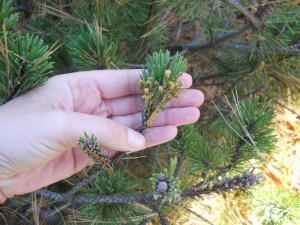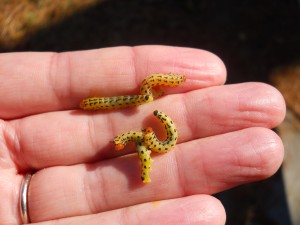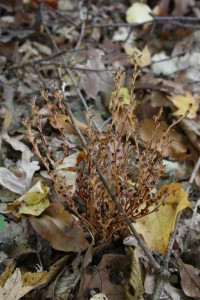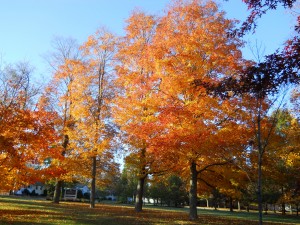I originally wrote this piece in the fall of 2008, when there were enormous numbers of moths out right around Thanksgiving. I sent it around to colleagues at school where it was well received. Originally it referred to a couple of people by name. Here I just use initials. Tonight (Nov 21, 2012) moths are out in force in my yard, in the headlights of my car. Time to repost!
Enquiring Minds have been asking…
Leaving west campus in the dark of early evening, I have been bombarded by clouds of fluttering moths at the glass entrance to the building. They lie in the wet of the sidewalk, bang against my face, tap on my hands as I flick them away. You have seen them too, I know, because I hear the tidbits of lunch room speculations, references to the movie “The Birds”.
Will they take over? Will Hitchcock’s legacy live on in some dreadful horror flick in which staff and faculty are battered to death by moths? Moths in the eyes (Ta dum ta dum) the mouth (the horror!!)? -JM running screaming into the building, beating back the flurry of powdered wings , GC found frozen in terror, covered by moths, almost to his car at the chapel lot….
Possibly. I can’t really speak to that. But if you wondered, they are males of the winter moth(Operophtera brumata), a European species introduced about a decade ago that has taken over the Thanksgiving and Advent periods in eastern Massachusetts for the past several years. The larvae are those light green inchworms that so devastate your crabapple and oak trees in the spring, leaving only skeleton veins of those first juicy leaves. The house sparrows love them.
But only males? Yup. The females are flightless. If you look closely at walls and doors, you will see what look like mutant moths, just bodies with tiny wrinkled vestigal wings. They are supposed to be like that. They sit there and send out chemicals more powerful than the best Christmas present perfume, that call to the males, “come find me” and apparently it works, except for all the males lost trying to get to the lights through the glass doors at west campus, or feebly pulsing in the puddles that I pass.
Winter moths are similar to the native fall cankerworm. It comes out at the same time, and also has flightless females. But cankerworms don’t build up the huge numbers we have been seeing during this season weeks. So these are almost certainly the European winter moth.
So, if you have been wondering, there you have it. If you haven’t been wondering, get out and notice while they are still around! U Mass extension says we may be in for more winter moths than usual if the winter is mild.
More information is available through UMASS extension for those who really want to know…http://extension.umass.edu/landscape/news/warm-winter-2012-and-what-expect-winter-moth-massachusetts

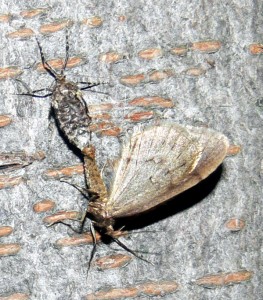
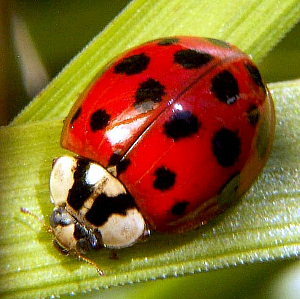
 http://www.elisabethtovabailey.net
http://www.elisabethtovabailey.net